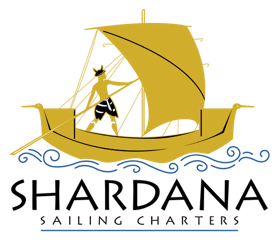Meaning of Eight Nautical Terms Heard On Chesapeake Bay
Ever hear a waterman, sailor, fisherman or local say some nautical terms and you think to yourself “what does that term mean?” We do too! So here are some fun and interesting meanings for the some if the nautical terms you may hear while visiting the Chesapeake Bay.
1) Roadsteads
Roadsteads are sheltered stretches of water near the shore where it is possible to safely drop anchor. This meaning is what originally gave Hampton Roads, the body of water where the James, Namesond and Elizabeth rivers pour into the mouth of the Chesapeake Bay, it’s name.
2) Skipjacks
The name, skipjack, is taken from fish (such as skipjack herring, skipjack mackeral, skipjack tuna) that leap in and out of water, and play on the water's surface. With a reputation for speed, skipjacks sometimes can resemble the fish as they come about quickly making continuous passes or "licks" over oyster beds.
On Maryland's Eastern Shore, the skipjack originated in the 1890s. It was better known as a small "two-sail bateau" with a V-hull. The craft evolved into a larger, hearty skipjack, powerful in light winds. Ranging in length from 25 to 50 feet, these boats have a shallow draft with centerboard and carry a single mast, two-sail sloop rig.
3) PUNGY
Small versions of schooners, pungies got their name from the town of Pungo-teague in Virginia, where they were built. Only one is left in the world—Lady Maryland, which takes kids out on the bay for the Living Classrooms Foundation.


